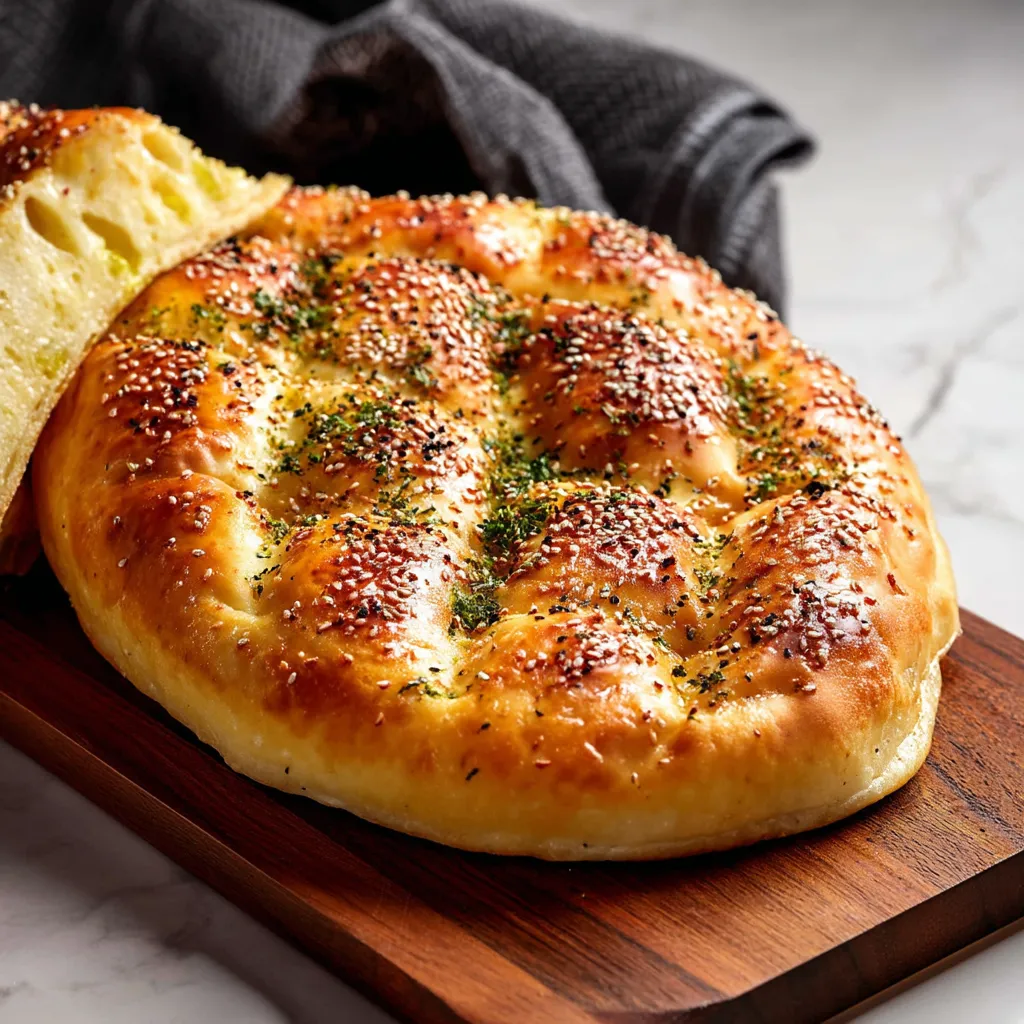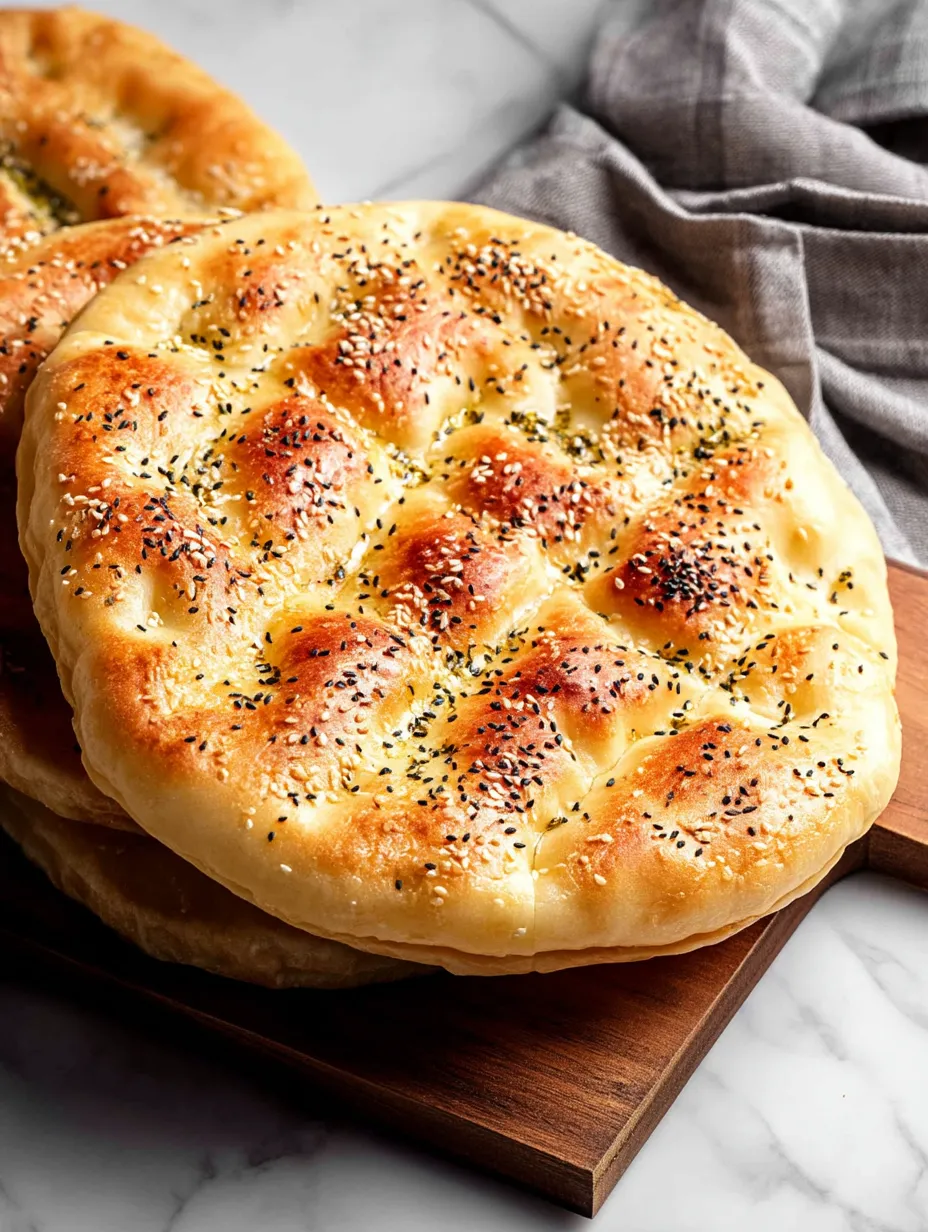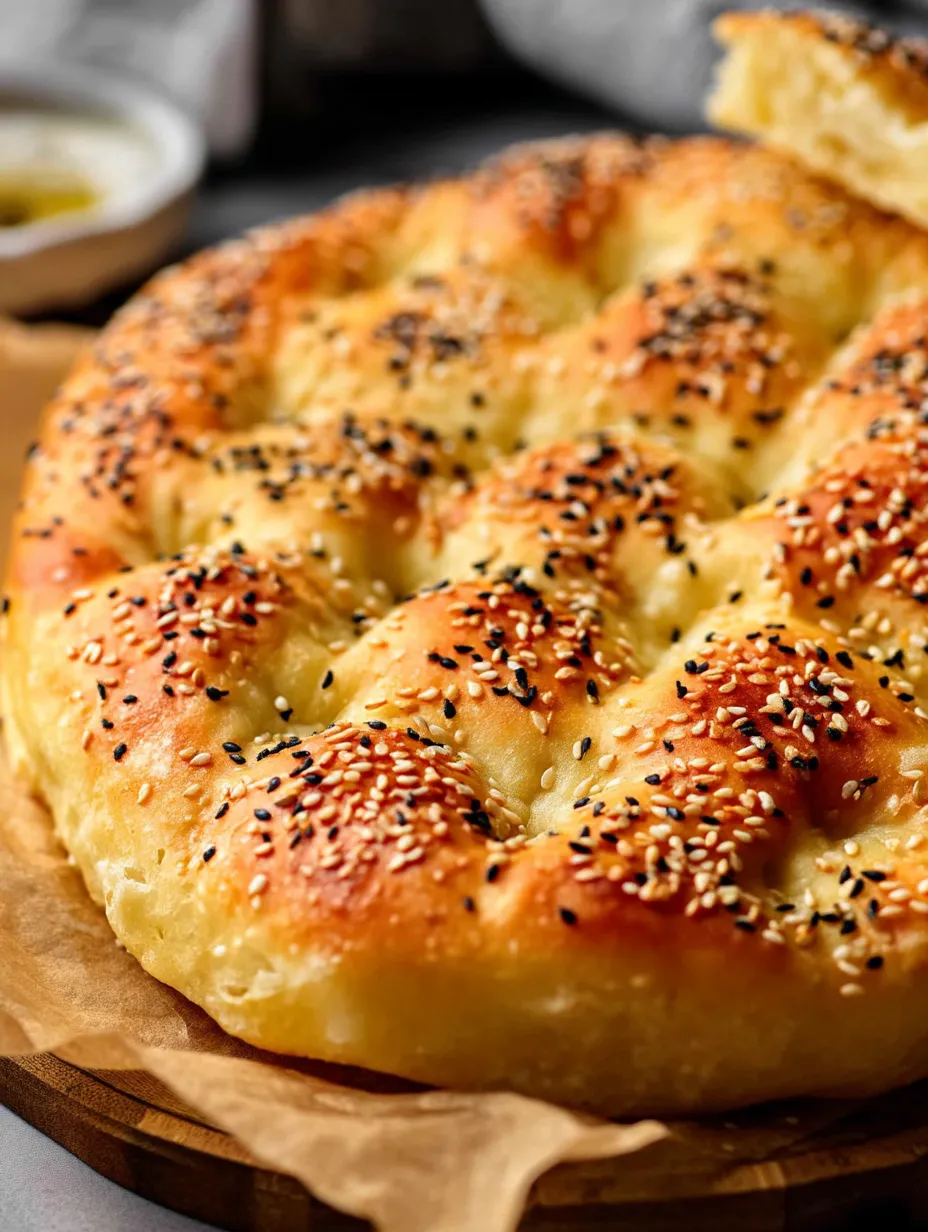 Pin it
Pin it
This airy Turkish pide bread brings the true flavor of Turkey's cooking to your home with its soft middle and golden outer layer that'll wow everyone at dinner. This eye-catching yet simple flatbread goes great with your favorite dips or as a sidekick to main meals.
I tried making this Turkish bread during a random Sunday when I was playing around with Mediterranean food. The second my kids tore chunks off the hot bread straight from the oven, it became our go-to recipe that we now make whenever company's coming.
Ingredients
- Flour: Regular or bread flour builds the foundation with bread flour giving you more chew if you want it
- Instant yeast: Makes the dough rise quickly and doesn't need mixing beforehand
- Granulated sugar: Gives the yeast something to eat and adds just a hint of sweetness
- Kosher salt: Brings out the taste and keeps the yeast in check
- Water: Wakes up the yeast and helps form your dough
- Egg yolk: Turns the top into that beautiful golden brown color
- Yogurt: Makes the crust softer and adds a tiny bit of tang
- Sesame seeds: Add a nutty taste and the classic look
- Nigella seeds: Bring that slightly peppery kick that's totally Turkish
Step-by-Step Instructions
- Prepare the dough:
- Sift your flour into a big bowl and throw in the dry yeast, kosher salt, and sugar. Stir everything well so it's all mixed up. Pour water in and stir until it clumps together. Move this rough dough to your stand mixer with the dough hook and run it medium-high for about 8-10 minutes. You'll end up with dough that's smooth but still a bit sticky to touch.
- First rise:
- Put your dough in a bowl with a little oil and cover it with a kitchen towel. Let it sit somewhere warm for about an hour until it's twice as big. This waiting time builds flavor and texture that makes your bread super good.
- Shape the bread:
- Once it's risen, gently push the dough down to get rid of air bubbles. Move it to a well-floured counter. Cut the dough in half for bigger breads or into four pieces for smaller ones. Form each piece into a ball by tucking edges under and gently rolling it between your hands.
- Second rise and preparation:
- Roll each ball into a circle about ½ inch thick. Cover them with a towel and let them rest 20-30 minutes. This last rise makes them extra fluffy. While waiting, heat your oven as hot as it goes, usually around 440°F (225°C). Mix egg yolk, yogurt, and water in a small bowl for your egg wash.
- Create traditional indentations:
- Use your fingers to make dents all around the edge of each circle. Then make 3-4 more rows of dents going toward the middle. These little dips make the bread look authentic and help hold the egg wash.
- Final touches and baking:
- Brush plenty of egg wash over the whole surface, making sure it gets into all the dents. Sprinkle sesame seeds and nigella seeds on top. Bake for 15-20 minutes until your bread turns a nice golden brown. Tap the bottom – if it sounds hollow, it's done.
 Pin it
Pin it
What I love most about making this bread is pressing those little finger patterns into the dough. There's something really calming about connecting with hundreds of years of bread-making history through such a simple touch.
Storage and Reheating
Keep your Turkish bread in a sealed container or wrapped tight in plastic at room temp for up to 3 days. If you want to keep it longer, freeze the cooled bread wrapped in plastic and then foil for up to 3 months. To warm it back up, lightly splash some water on it and pop it in a 350°F oven for 5-7 minutes until it's hot. That tiny bit of water helps bring back moisture so it tastes fresh-baked again.
Serving Suggestions
In Turkey, folks use pide bread to scoop up all kinds of dips and sauces during meals. Try serving it with hummus, baba ganoush, or tzatziki for a real Mediterranean feel. The bread also tastes amazing with hearty stews, soups, or anything grilled. For a full Turkish dinner, put your homemade pide next to some kebabs, cacik (that's cucumber yogurt dip), and a fresh shepherd salad. The bread's slight sweetness works really well against savory foods.
 Pin it
Pin it
Make Ahead Tips
You can make the dough up to 24 hours early and stick it in the fridge for its first rise. This slow, cold rising actually makes it taste even better. Just take the dough out about an hour before you want to shape it so it can warm up. This trick works great when you've got company coming – mix up the dough the day before and bake fresh bread right before everyone arrives.
Frequently Asked Questions
- → What does Turkish pide taste like?
Turkish pide bread is soft and slightly chewy with a golden crust. It's lightly seasoned, making it perfect for savory meals or dips.
- → How do I keep the bread soft?
Using fresh yeast and enough rising time keeps the bread soft. Cover the dough during resting to avoid drying out.
- → What do I need to make pide?
You’ll need basic items: flour, yeast, salt, sugar, water, plus an egg mixture for the shiny topping. You can add sesame or nigella seeds if you like.
- → How much time does it take to prepare?
The entire process, including rising, is about two hours from start to finish.
- → Can I replace bread flour with something else?
It’s possible to use all-purpose flour, though bread flour gives a slightly better texture and stretchiness.
- → Why use an egg wash?
The egg wash adds a golden, shiny look to the crust and locks in moisture for a soft inside.
- → Is it okay to freeze Turkish pide?
Definitely! Once it cools, wrap it well and freeze. Warm it up in the oven before serving again.
